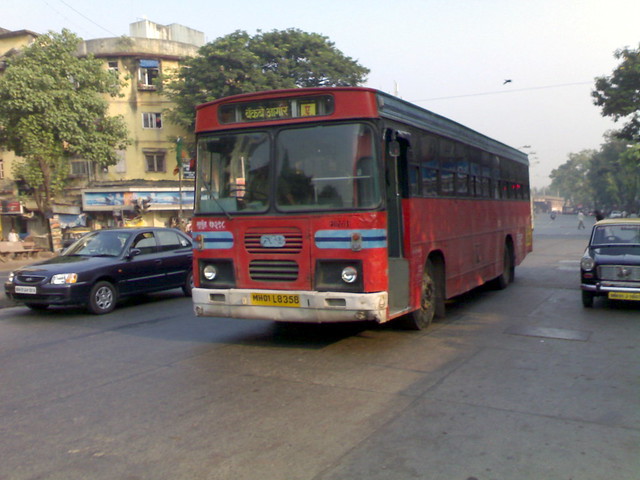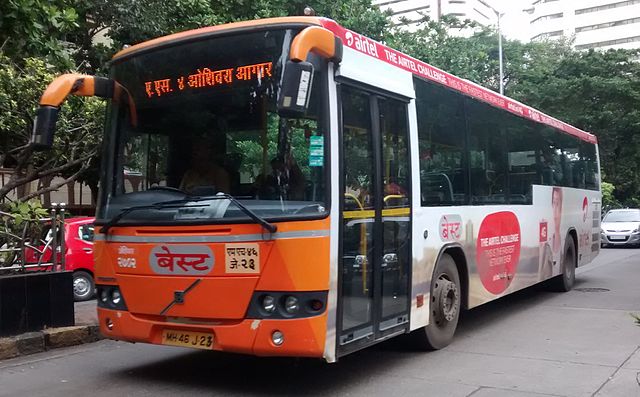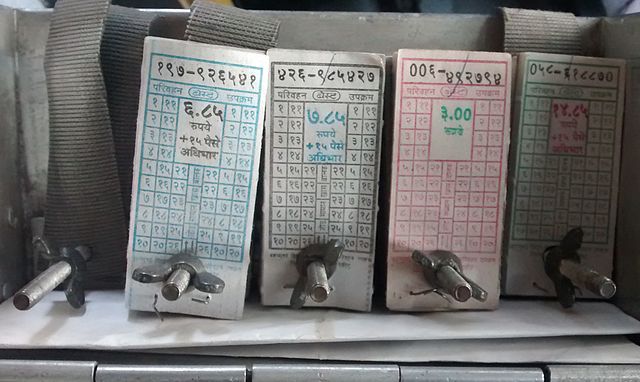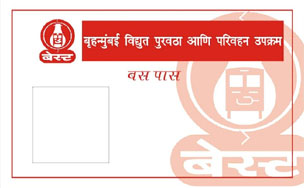BEST and AC buses don’t exactly go hand-in-hand. Atleast not anymore. BEST should think of a way to reverse that.

BEST introduced AC buses, back in 1998. These buses were built by Ashok Leyland and had Opening Windows. Tickets were a bit on the higher side, and included a newspaper [English or Marathi] and a 300ml bottle of water. These buses operated on the following routes routes initially:
- A1 – Hutatma Chowk to Andheri Station (West)
- A2 – World Trade Centre to Oshiwara Depot
- A4 – Hutatma Chowk to Ghatkopar Bus Station
- A422 – Agarkar Chowk to Mulund Bus Station
- A461 – Mulund Bus Station (West) to Borivali Station (West)
These buses ran mostly in the mornings and evenings, mainly serving the office-crowd.
In 2008, under then General Manager Uttam Khobragade, BEST procured the first set of their purple ”Kinglong” buses. It took a lot of time to figure out that these Purple Faeries weren’t actually Kinglong buses. These buses were assembled in Punjab by Jaycee Coach Builders Limited [JCBL] and sold under their ”Cerita” brand.
The Kinglong buses owned by BEST were not Kinglong at all. Share on X
These buses were powered by CNG, and unlike other AC buses, didn’t have a slave engine to power the air-conditioning unit, thus resulting in slow speeds and bad pickup. In simple terms, they struggle to climb the simplest of slopes. Yet, they had comfortable seats. These Purple Faeries used to breakdown frequently and some of them caught fire, thus leading to deteriorating quality of BEST AC services.
Somewhere around this time, BEST received a CNG version of the Volvo 8400 on the B7RLE chassis for trial runs. After a few weeks of trial runs from the Oshiwara depot, the bus was transferred to the Wadala Depot, after wihch it was returned to Volvo. Unfortunately, BEST never purchased the bus. It had a separate Slave Engine to power the AC, thus overcoming all the shortfalls of the Cerita buses.
Post this, BEST inked a deal with an advertising firm called Asian Concierge who were ready to supply BEST with 50 Diesel-powered Volvo 8400s in exchange for full body advertisements on them for 15 years. The deal was quite revolutionary and would have changed the transport scene, however, only 6 buses were procured. All of them belong to the Oshiwara Depot and ply on AS-4 between Oshiwara Depot and Backbay Depot.

Now, the deal is that BEST, which was among the first Transcos in India to get AC buses is slowly phasing them out because of competition from the TMT, NMMT and MSRTC. For starters, BEST used to run a bus AS-505 from Santacruz Depot to CBD Belapur. They curtailed it because NMMT flooded the roads with AC-105 which ran from Bandra Bus Station to CBD Belapur. When I requested BEST to restart AS-505, they replied stating that it was a loss making route, and hence would not be possible. However, BEST’s 505Ltd is among the most profitable routes in the sector. Subsequently, NMMT has launched AC-106 which goes to CBD Belapur via Nerul (West). AC-105 remains their most profitable route.
Similarly, BEST’s AS-700 is doing miserably these days between Borivali Station (East) and Thane Station (East) because of competition from both TMT’s AC-65, AC-125, and NMMT’s AC-131. Now I can understand. Borivali comes under the jurisdiction of the Municipal Corporation of Greater Mumbai and Thane under the Thane Municipal Corporation, both pass through the jurisdiction of the Mira-Bhayandar Municipal Corporation as well, but NMMT? AC-131 starts from Borivali Station (East), takes the same route via Ghodbunder Road to reach Kopri [Thane Station], from where it proceeds to Airoli Sector 5, via the Mulund-Airoli Bridge, thus running a total of 9km within its own jurisdiction. What is the need to enter Thane Station? NMMT plies two more AC routes to Borivali, AC-123 and AC-125, from Borivali to Ova Camp in Kharghar. Both take Jogeshwari Vikhroli Link Road, where one takes LBS Marg, and the other the Eastern Express Highway, to reach the Mulund Airoli Bridge and then continue along Thane-Belapur Road. Where is the logic in this? The irony is that if you calculate the number of stops between Dindoshi Junction and the Mulund Airoli Bridge Toll Plaza; here is the interesting result that you get:
- BEST 523 Ltd has 42 stops.
- BEST 525 Ltd has 36 stops.
- BEST AS-524 has 23 stops.
- NMMT AC-123 has 43 stops.
- NMMT AC-125 has 36 stops.
This makes BEST the fastest on this route. With fewer stops, any bus runs faster. This is the theory under which Limited Stop Services normally operate.
TMT runs a bus from Cadbury Junction to Agarkar Chowk in Andheri East. This bus enters Mumbai via the Mulund (West) Check Naka and takes the same route as AS-422 to reach Andheri. It travels a total of 3.5 km within Thane and close to 21km in Mumbai. NMMT’s Borivali to Kharghar routes overlap majorly with BEST’s AS-461.
As if all this was not enough, the MSRTC, went one level over all of this, by launching their now-discontinued Shivneri Corporate service. These buses where the regular Shivneri Volvo B7R buses running along the Kandivali-Bandra Kurla Complex [BKC] route, non-stop. BEST plies A77Express on the same route, at the same hours. The only difference was that A77Express started from Gorai, took all flyovers on the Western Express Highway and had a total of 20 odd stops while the Shivneri had none. The service was soon shelved because the fare of ₹100 one way was too high.
What BEST must do now:
BEST must start looking into the profitable routes of the competition and find ways to maximize its revenue streams there. One must remember that all TMT and NMMT AC routes enter Mumbai. None of them are entirely within their territories.
BEST here has an advantage that they must make use of completely. Electronic Ticketing Machines and the Public Information System are two features that only BEST has in its kitty. Prepaid cards, a Daily Pass system for AC buses, and GPS based tracking of buses is what can help position BEST above its competition.
BEST must also pursue the matter with Asian Concierge for the remaining of the 50 Volvo buses so that newer routes can be planned. BEST must allocate these buses onto these routes.
Possible Routes BEST can try out are:
- Restart AS-505 from Santacruz Depot to CBD Belapur. Run it every half an hour. Make sure the Bus Tracking system works for it.
- Start a bus, exclusively for the Western Suburbs. It can be on the lines of AS-4 from Oshiwara, but should terminate at Bandra, and can take alternate routes like going into Seven Bunglows and taking the route taken by 56. Run it at half hour intervals. With rising auto fares, people will definitely take these buses. Start similar buses along the Central Suburbs in both West and East.
- Increase the frequency of AS-6 which connects Backbay Depot to King’s Circle. Let this be a bus that connects the Central Part of South Mumbai. Similarly run a bus from Backbay to Chembur along the Eastern areas. The Western part of South Mumbai is served by AS-4, whose frequency should be increased.
- Start an AC bus from Mantralaya to CBD Belapur and to Kopar Khairane. Route these buses via Tadeo, Lotus (Worli) and then go towards Navi Mumbai. Perhaps an Express service can work here, via the Sea Link, land up at Sion and go on to CBD Belapur, while avoiding Vashi Bus Station.
BEST must innovate and provide more options for commuters. BEST has an edge over the other two players, which it is sadly not making good use of. Being India’s oldest Public Transport Corporation, I hate to see BEST lose out to newer entities who are just flooding the roads with their buses, and turning BEST buses into Bus. No 8954.
BEST must innovate with their AC fleet for the benefit of Mumbai. Share on XIn 2015, BEST brought out some drastic measures including curtailing of a few routes, reducing frequencies of AS700, cancelling AS706, and scrapping AS422 on Sundays.
Early 2016, NMMT placed orders for Volvo B7RLEs that were Diesel-Electric Hybrids. Shortly after that, MMRDA purchased 25 AC Tata Starbus Electric-Diesel Hybrids which would ply on dedicated lanes in Bandra-Kurla Complex. The impact of it, is to be seen.
![]()





